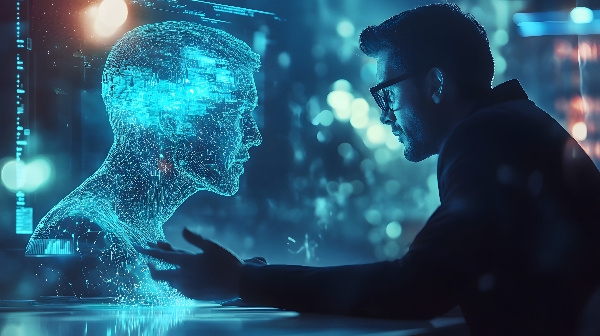Published on
The Next Frontier: Human-AI Collaboration for a Smarter Workforce

In his September 10, 2024 Forbes article, Peter Pluim discussed the necessity of embracing the power of human and AI collaboration to create new opportunities. As per one definition, “Human-AI Collaboration is a dynamic field within artificial intelligence (AI) that explores the synergistic interaction between humans and AI systems in various contexts, including collaborative teams, integrated systems, and user interfaces.”
This partnership extends beyond automation, encompassing skill augmentation, innovation and shared problem solving. When successfully integrated, AI can enhance human skills, streamline workflows and foster a more supportive and balanced work environment. By automating repetitive tasks and optimizing decision making, AI empowers workers to focus on high-level creative and strategic initiatives. This collaboration paves the way for a future where human ingenuity and machine precision complement each other seamlessly.
Transforming Professional Development Through AI
AI-powered learning tools are revolutionizing professional development by enabling individuals to acquire new skills with greater efficiency and personalization. Platforms like Udemy and Coursera use AI to analyze users’ learning styles and recommend courses tailored to their preferences and engagement patterns. Learners can progress at their own pace, accessing resources that align with their unique needs and goals. In software development, tools like GitHub Copilot suggest code snippets, detect bugs and assist developers in learning new programming frameworks. By automating routine coding tasks and providing instant feedback, these tools allow professionals to focus on higher-order problem solving and innovation, equipping them for evolving challenges.
Driving Innovation Through Human-AI Collaboration
Human-AI collaboration has become a catalyst for innovation across industries. AI tools enable humans to solve complex problems and create new opportunities, as platforms like Adobe Sensei exemplify. This design tool uses AI to streamline tasks in creative software such as Photoshop and Illustrator, automating processes like image tagging and content-aware editing. Similarly, manufacturing companies like Siemens and General Electric leverage AI for predictive maintenance and operational optimization. By analyzing sensor data, these systems predict machine failures and recommend preventive actions, reducing downtime and costs. As AI technology advances, its potential to drive transformative collaborations in diverse sectors continues to grow.
Enhancing Problem Solving with AI Assistance
The problem-solving landscape has evolved significantly with the integration of AI, which excels in processing vast amounts of data and uncovering patterns that might elude humans. For instance, DeepMind’s AlphaFold system has revolutionized the study of protein structures, detecting genetic data that were previously difficult to analyze. Medical professionals interpret these findings, applying their expertise to make informed decisions while considering patient-specific factors like history and symptoms. This collaboration illustrates the complementary roles of AI and humans, where machines provide insights and humans deliver ethical judgment, creativity and contextual understanding. Together, they achieve results that neither could accomplish alone.
Redefining the Future of Work Through Synergy
As technology evolves, the synergy between humans and AI is transforming industries and redefining how we work, learn and innovate. By integrating AI into workflows and professional development, organizations can stay ahead of the curve and create more inclusive, efficient and empathetic work environments. This partnership leverages human creativity and ethical judgment alongside AI’s analytical capabilities, driving breakthroughs across fields. The future of work depends on harnessing this collaboration to unlock potential and push boundaries. By embracing this evolving relationship, we can design a future where human ingenuity and machine intelligence work hand in hand to achieve unparalleled progress.



